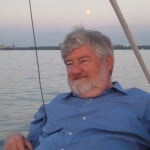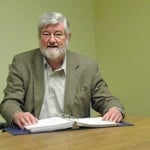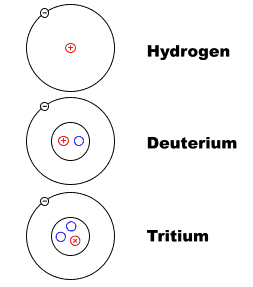This posting is being republished with hyperlinks.
The following is a further posting in a series of articles by David French, a patent attorney with 35 years experience, which will review issues of interest touching on the field of Cold Fusion.
Following the April 23, 2012 posting on ColdFusionNow one of the commentators observed as follows:
“The US Patent Office has become a grave yard for “Cold Fusion” applications. I wonder what would happen if the ‘powers that be’ anoint one particular LENR application. ………. Frankly, it is hard to believe all the LENR patents are failing to pass US Patent Office muster due to failure to prove that the device works as promised.”
There seems to be a widely held impression that the US Patent Office is refusing to granting patents relating to Cold Fusion devices. This is both true and not true. Here is the background.
There is actually a class in the US patent office classification system for inventions that relate to Cold Fusion. Here it is:
Class 376 INDUCED NUCLEAR REACTIONS: PROCESSES, SYSTEMS, AND ELEMENTS
Subclass 100 NUCLEAR FUSION
– pending applications in AppFT Database for CCL/”376″/100: 79 applications.– issued patents in US Patent Collection db for CCL/376/100: 65 patents.
(Searches done May 29, 2012)
A review of these applications and patents will show that most do not all relate to Cold Fusion. Here are the results obtained by adding “Cold Fusion” as a search term:
Subclass 100 NUCLEAR FUSION
– applications in AppFT Database for CCL/”376″/100 and “Cold Fusion: 21 applications.
– patents in US Patent Collection db for CCL/376/100 and “Cold Fusion”: 27 patents.
However “Cold Fusion” does not appear in any of the claims of the referenced patents. It does appear in the claims of 2 of the referenced applications:
PUB. APP. NO. Title
1. 20100008461 Cold Fusion apparatus Inventor: Hodgson; John Andrew; (Safety Harbor, FL)
2. 20070140400 Cold Fusion apparatus Inventor: Hodgson; John Andrew; (Safety Harbor, FL)
The first, later application published in 2010, replaces the earlier application which was abandoned. Neither of these applications have been examined to the point of being allowed to issue as a patent.
Of the 27 issued patents containing the word “Cold Fusion” it is apparent even just from the titles that they do not necessarily relate to that field precisely. For example, the reference to:
United States Patent 6,024,935 issued to Randall Mills et al. on February 15, 2000 and entitled
“Lower-energy hydrogen methods and structures” only refers to “Cold Fusion” in the list of prior art documentation.
Leaving Class 376 for the moment to identify other patents, US patent 7,893,414 entitled ” Apparatus and method for absorption of incident gamma radiation and its conversion to outgoing radiation at less penetrating, lower energies and frequencies” issued to Lattice Energy LLC (Chicago, IL) on February 22, 2011 on an invention by Lewis G. Larsen of Chicago, IL and Allan Widom of Brighton, MA This patent is not classified as being directed to Cold Fusion technology. The abstract of this patent reads as follows:
Abstract
Gamma radiation (22) is shielded by producing a region of heavy electrons (4) and receiving incident gamma radiation in such region. The heavy electrons absorb energy from the gamma radiation and re-radiate it as photons (38, 40) at a lower energy and frequency. The heavy electrons may be produced in surface plasmon polaritons. Multiple regions (6) of collectively oscillating protons or deuterons with associated heavy electrons may be provided. Nanoparticles of a target material on a metallic surface capable of supporting surface plasmons may be provided. The region of heavy electrons is associated with that metallic surface. The method induces a breakdown in a Born-Oppenheimer approximation Apparatus and method are described.
This patent was classified in US class 250 , subclass 515.1. US class 250 relates to “Radiant Energy”, and subclass 515.1 is defined as follows:
515.1 Shields:
This subclass is indented under subclass 505.1. Subject matter comprising means to absorb radiant energy not elsewhere provided for.
Subclass 505.1 in turn is defined as follows:
505.1 Radiation Controlling Means:
This subclass is indented under the class definition. Subject matter comprising means to modify, contain or eliminate at least some of the emanations or (or caused by, in the case of secondary emissions) a source of invisible radiation.
Accordingly, while the Widom and Larsen patent is very relevant to the field of Cold Fusion, as its claims are not focused on generating excess energy from a Cold Fusion effect, it has been classified elsewhere than US class and subclass 376/100.
Returning to Class 376/100, this Class is a catchall class for inventions that relate to nuclear fusion generally. Here is the subclass definition:
100 Nuclear Fusion
This subclass is indented under the class definition. Subject matter comprising structures and processes in which two reacting nuclei are combined to yield at least one nucleus having a greater mass than either of the reacting nuclei.
(1) Note. Subject matter of this subclass and of the subclasses indented hereunder may include, for example, reactions and methods including neutron generators wherein the neutron is a product of a fusion reaction, e.g., A D-T reaction.
(2) Note. Patents are included in this and indented subclasses even if there is failure of the system to actually obtain fusion if it is clear that the intent or aim of the patent is to obtain it.
(3) Note. Neutrons from an ionized or plasma system or reaction may be appropriately utilized or moderated to bring about or cause a fission-type nuclear reaction.
(4) Note. Energy or heat of a nuclear fission reaction system may be appropriately utilized to bring about ionization to plasma or fusion reaction levels.
Classifying Cold Fusion inventions in this class and subclass is really an act of despair. That category is very broad. Many dozens of further subclasses address particular cases of a nuclear fusion process. The higher subclass is only used if there is no existing more precise subclass. There is no US specific subclass for a Cold Fusion invention.
This specific subclass 376/100 presupposes that the nuclear reaction taking place is “two reacting nuclei are combined to yield at least one nucleus having a greater mass than either of the reacting nuclei”. Perhaps this event occurs in Cold Fusion, perhaps not. It may be that only neutron absorption occurs after neutrons are created, followed by fission. If that is what a patent application represents as occurring, then US Patent Office Examiners may hesitate to place such an application in Class 376/100. Nevertheless, this is where most Cold Fusion inventions based on increasing the mass of atomic nuclei are likely to be classified until a more specific subclass is created.
This ends Part 1 of this posting on patent classification as it relates to Cold Fusion. Part 1 has addressed the traditional classification system used at the US patent office. There is a separate classification system in effect in Europe. This is the “International Patent Classification” – IPC. Part 2 will address the treatment of Cold Fusion under the IPC.








